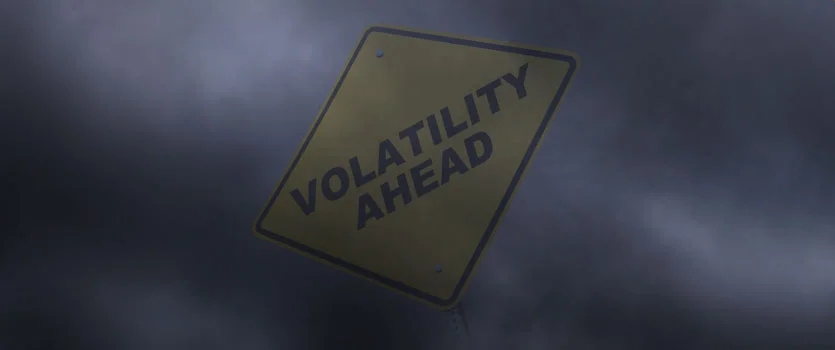By Anila Siraj, VP Kalibrate Strategy Group
When it comes to maturity, fuel retail markets can be generally characterized into four phases: Stable, Unstable, Competitive and Volatile. As retailers and the markets in which they exist progress through these phases, competition and price volatility increase, inevitably leading to a fight for volume and margin performance. Though it can be difficult to predict the pace of such progression, it is inescapable. Because markets do not develop in a uniform manner, pricing requirements may be different across a given network and any retailer who is unprepared for its market's varied competition levels will experience diminished performance .
The needs of a fuel retailer are different in each phase, but it is never too early to plan for the impending price volatility. In our two-part series on deregulation, we'll help you understand the different phases and how they impact you. In part one, we'll explore why deregulation occurs and the different phases it takes.
Why Does Deregulation Occur?
Deregulation occurs for a variety of reasons, but very often emerging markets begin the process due to political or economic pressures. The speed and degree to which deregulation is enacted will shift based on these pressures as well.
How Does Deregulation Unfold?
Let's take a closer look at each of the phases and how they progress.
Stable Market. In this type of market, everything is regulated and the government has control, meaning you, the retailer, have no freedom to change prices unless instructed by the government. You will benefit from a fixed margin and your focus should be driving volume via the six volume magnets: market, location, facilities, operations, merchandise and brand.
Unstable Market. When the deregulation process begins, instability takes over. In an unstable market, price controls will be lifted and there is a chance that competition will start to increase, which can breed uncertainty. If you do not possess a deep understanding of your market, customer, demographics, strategy, brand identity, value proposition, etc., this can be a very unpredictable time. While the margin and volume balance begins to establish itself through the actions of all fuel retailers, it's easy to think that you should drop prices to maintain volume. However, consumers are not price sensitive in these markets, due to their past experiences in a market where everyone priced the same, and where oftentimes price was never displayed.
Even in the unstable phase, prices still might not be displayed in the early stages, and even when they are, the consumer is so accustomed to standardization that she or he will not stop to compare. Still, that awareness begins to take shape during this phase. This is the point of inflection: either some retailers will attempt to undercut all other prices or retailers will all stay comfortably at a higher price. What happens in this moment defines how quickly your market moves from phase 2 to phase 3: competitive market.
Competitive Market. The move from the early phase of deregulation to the more dynamic and competitive phase can be inconspicuous. Many retailers are caught off guard by this transition as they are unprepared for the increased instability, complexity and competition.
In a competitive market, prices change on a regular basis, at least daily, and in some markets 2-3 times a day. Margin and volume are impacted. Everyone is jockeying for position and there's a constant fight for volume. Rightly or wrongly, price is often used as the main mechanism to achieve that volume, which introduces volatility. This phase can have the widest range of competitive behaviors, from those retailers trying to establish themselves as market leaders and pricing low — no matter the cost — to those who are able to manage their margin and use the six volume magnets to increase market share.
Some markets have attempted to manage the competitive factor and protect consumers by placing regulations on pricing frequency. (New Jersey, for instance, only allows retailers to reprice once every 24 hours.) While this may limit the number of fluctuations per day, in this format, you would still experience day-to-day volatility due to changing costs upstream.
Volatile Market. Once volatility is introduced, it’s very hard to get away from it. Volatile markets can become destructive. Within these markets, a restorative pricing cycle generally develops. This is characterized by very frequent price reductions in a single day (up to 20 per day in some markets) in an attempt to chase volume, to the point where margins are unsustainable. When this happens, a retailer will then 'restore' its retail prices to a level where margin is more acceptable.
The rest of the market will follow the retailer's upward move. But as soon as one retailer drops price in order to chase volume, the market feels obligated to react and the chase to the bottom restarts. The restorative cycle can be a few weeks long or only a 24-hour period, with a single restoration and numerous price decreases occurring within the same day.
In either case, margins and volume are the most challenging in a phase 4 volatile market.
Now that you've learned about the phases of market maturity in context to deregulation, stay tuned for part two of our series. In part two, we'll dive deeper into how different markets have evolved through the different phases and what it all means for you.
If you're interested in finding out how ready you are for deregulation, reach out to schedule a time with a Kalibrate strategist for guidance through this volatile time.

